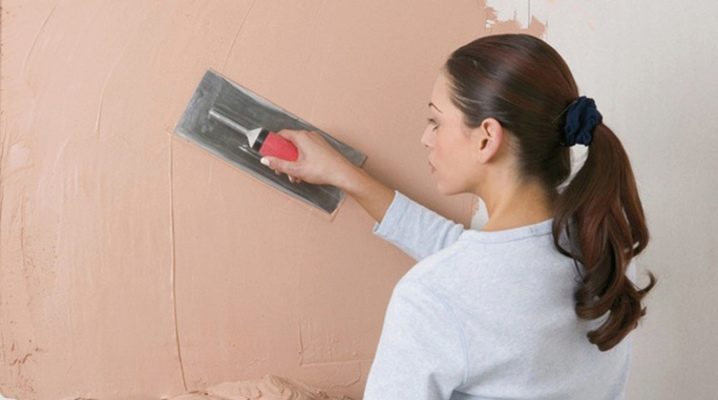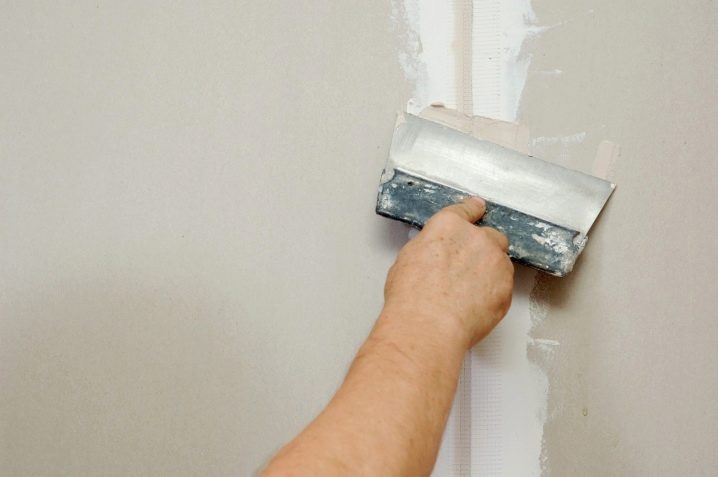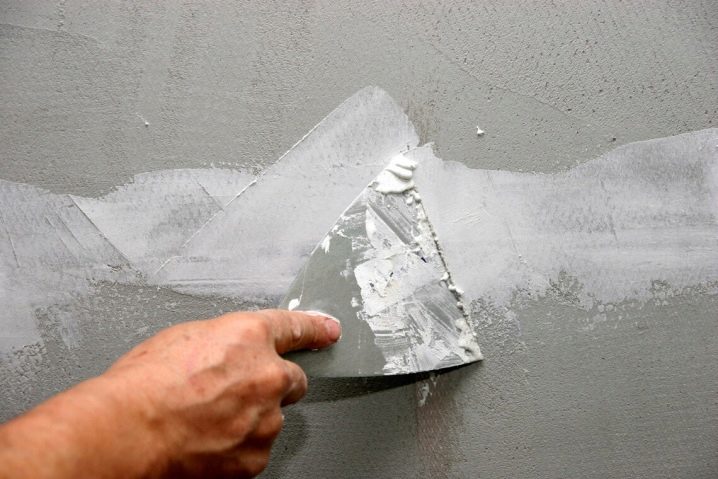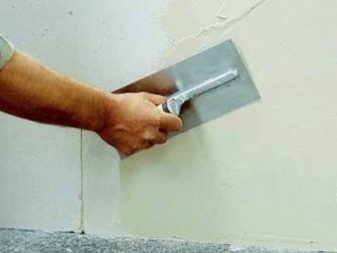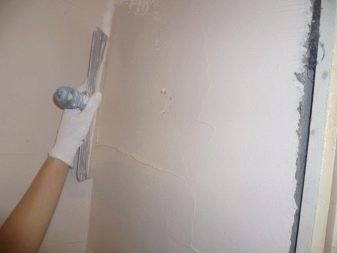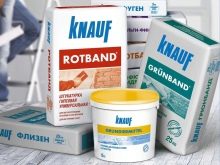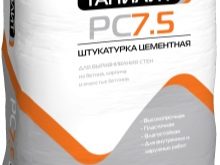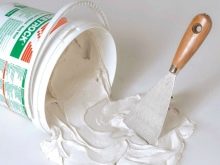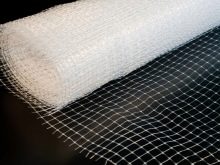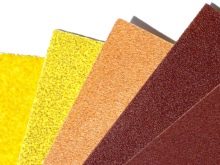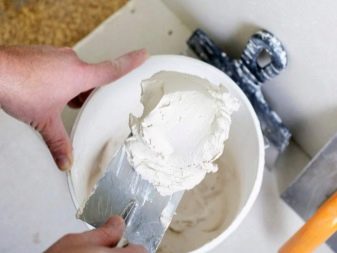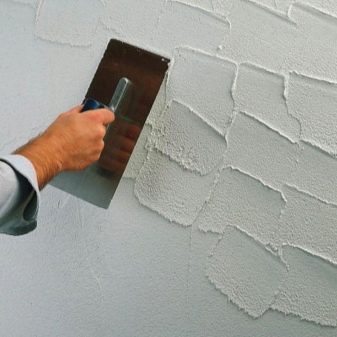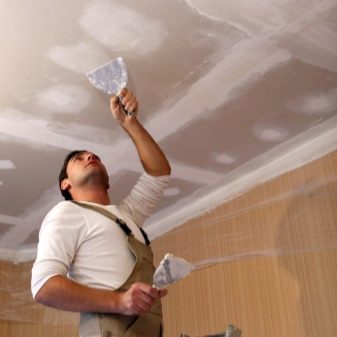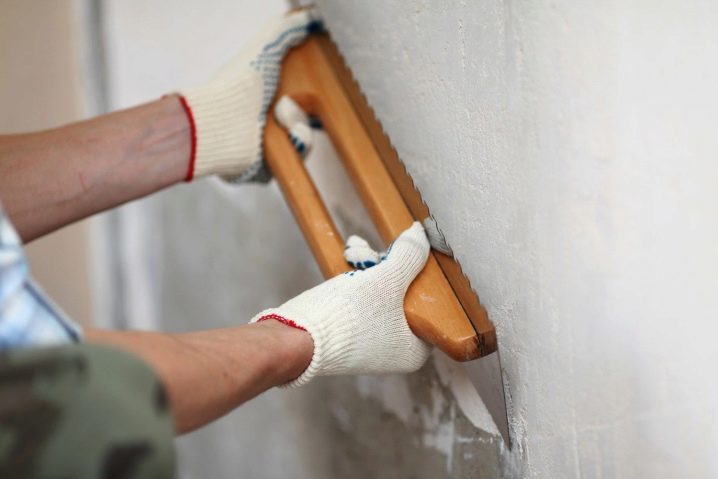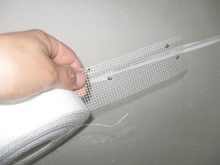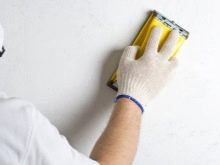How to plaster the drywall with your own hands?
Drywall is today used to solve many problems when finishing the premises. With it, align the ceilings and walls, as well as form partitions or other similar fences. This material is already initially produced with a flat surface. But for his better training, experts recommend plastering drywall. Thus, you can get perfectly smooth surfaces that are suitable for all types of finishes.
When do they putty?
The use of drywall sheets does not always provide a good base. Solve these problems with the help of special mixtures that are applied both to the joints and to the entire plane of the material.
Experts recommend using puttying in several cases:
- Paint the wall or ceiling. If this is not done, there will be noticeable drops on the walls that the paint cannot level.
- Putting decorative plasters. With the help of finishing solutions the adhesion with similar compositions is increased.
- Visual alignment of overshoot that may affect the laying of finishing materials. Often, the plaster is applied under the wallpaper.
Plaster should be applied only on moisture-proof plasterboard walls, as they are able to withstand high humidity. When conventional mixtures are used for such purposes, the result can be unpredictable.
We select the solution
The quality of the plasterboard coating and the service life of such a surface depends on the composition that will be applied to it.
The modern market offers several types of gypsum plasterboards:
- Plaster mixes. Products are perfect for drywall sheets, since technically it is one and the same substance. The disadvantage of these solutions is the rapid absorption of moisture. Therefore, it will be correct to apply gypsum plaster only in dry rooms, where there is no large humidity drop.
- Cement formulations. Solutions of this type withstand high humidity well. Therefore, with their help, you can additionally protect drywall sheets from water. You can use them in almost any room.
- Polymer plaster. They appeared relatively recently. Their composition may include both gypsum and cement. But to change the basic physical properties, various types of polymers are added there. Therefore, such mixtures perfectly withstand high humidity. They are versatile and suitable for many tasks. The only drawback of polymer plasters can be considered their high cost.
If you are a beginner and decide to do their own plastering, then experts recommend to give preference to universal solutions. They are much easier to apply, allowing you to get a flat surface with a minimal amount of flaws.
Stocking tools
Sheets and blends are handled by various accessories. With their help, you can speed up the process, as well as get a high quality surface.
For plastering you need a few items:
- Punch and nozzle for mixing the solution. If the area is small, then these operations can be carried out manually.
- Screwdriver and several nozzles of different sizes.
- Spatulas. You will need a tool of various sizes. It is important that the end of the spatula is smooth.
- Reinforcing mesh. Some experts use for this special paper.
- Fine sandpaper. You can purchase several of its types, as this will allow to process the plaster with higher accuracy.
Preparatory operations
Before applying the main layer of plaster, should be leveled plasterboard surface.
These works are quite simple and involve the implementation of such operations:
- First of all, visually and to the touch they check whether the caps of the screws are protruding above the surface of the sheet. If yes, then it is advisable to drown them somewhat below this level. To do this, simply screw into a screwdriver into the bit a little. Do not use a screwdriver, as you may simply perforate the material or drive the fastener too deep.
- Pay attention to the joints. There must be an edge in these places.In most cases, it is present, as the manufacturers equipped it with sheets. But if it is absent, you need to carefully cut off the ends of the drywall with a stationery knife at an angle of 45 degrees.
- Primer. Drywall treatment is carried out with special solutions that can strengthen its structure. But it is undesirable to use mixtures based on alkyds, as these components quickly corrode paper. You can choose the right products in specialized stores.
- Seal of irregularities and joints. Initially, each hole from the screw is filled with putty. Apply it with a narrow spatula crosswise. It is important not to form a bump protruding above the main surface. Before filling the joints, a special mesh is attached to their surface. After that, it is fixed with a liquid solution. It also provides maximum surface alignment.
- If a multi-level ceiling or arch is formed from drywall, then you need to strengthen it with special corners. Please note that they can be external and internal. Fixing them with screws or the same solution.After that, in the same way, fill all the technical holes with the finished mixture.
When the preparatory work is completed, you should leave the surface alone for one day. During this time, the composition is completely dry and it can be further trimmed with emery paper. After that, the entire surface is covered with primers. It is possible to apply a groove on the plasterboard once after fully filling all the joints and damage.
Algorithm of work
The technology of applying the solution is relatively simple, but requires adherence to a few simple rules:
- Cooking should be a small amount of the mixture, as it quickly hardens. This is important if you have no experience and you can not quickly apply the solution to drywall.
- Plastering always starts with corners, moving consistently towards the center of the wall or ceiling.
- The thickness of the applied layer should not exceed 5 mm. If you immediately cover the sheet with a thick layer of plaster, then this will lead to rapid cracking of the material during drying.
- Do not press hard on the spatula during operation. This will not allow to get a uniform layer.
- Each new piece is applied with a slight influx to the previously attached plaster. Thus, it turns out a kind of ligation, which allows to achieve a whole layer.
- Spatula with plaster are at an angle of not more than 15 degrees. If this value is increased, then it is not always possible to obtain a smooth surface after the first application.
- When filling, pay attention to elevation differences. Do not try to align them with multiple layers. It is better to give them to dry, and then apply a new thin portion of the composition.
- Plastering should be in several cycles. After each operation, you need to give at least a day to the composition dried.
- The final step is leveling the plaster. To do this, use several types of plaster paper. It is important to achieve a perfectly flat surface with a minimum number of differences. This work can be optimized using a special paint float. Be sure to use personal protective equipment (glasses, gloves, and a respirator).
Working with drywall, or rather, its plastering is a simple operation that requires only time and patience.To get a perfectly flat surface, you should use high-quality materials and follow the recommendations of experts, all operations should be carried out carefully, in compliance with the technology.
For how to plaster your own, see the following video.
